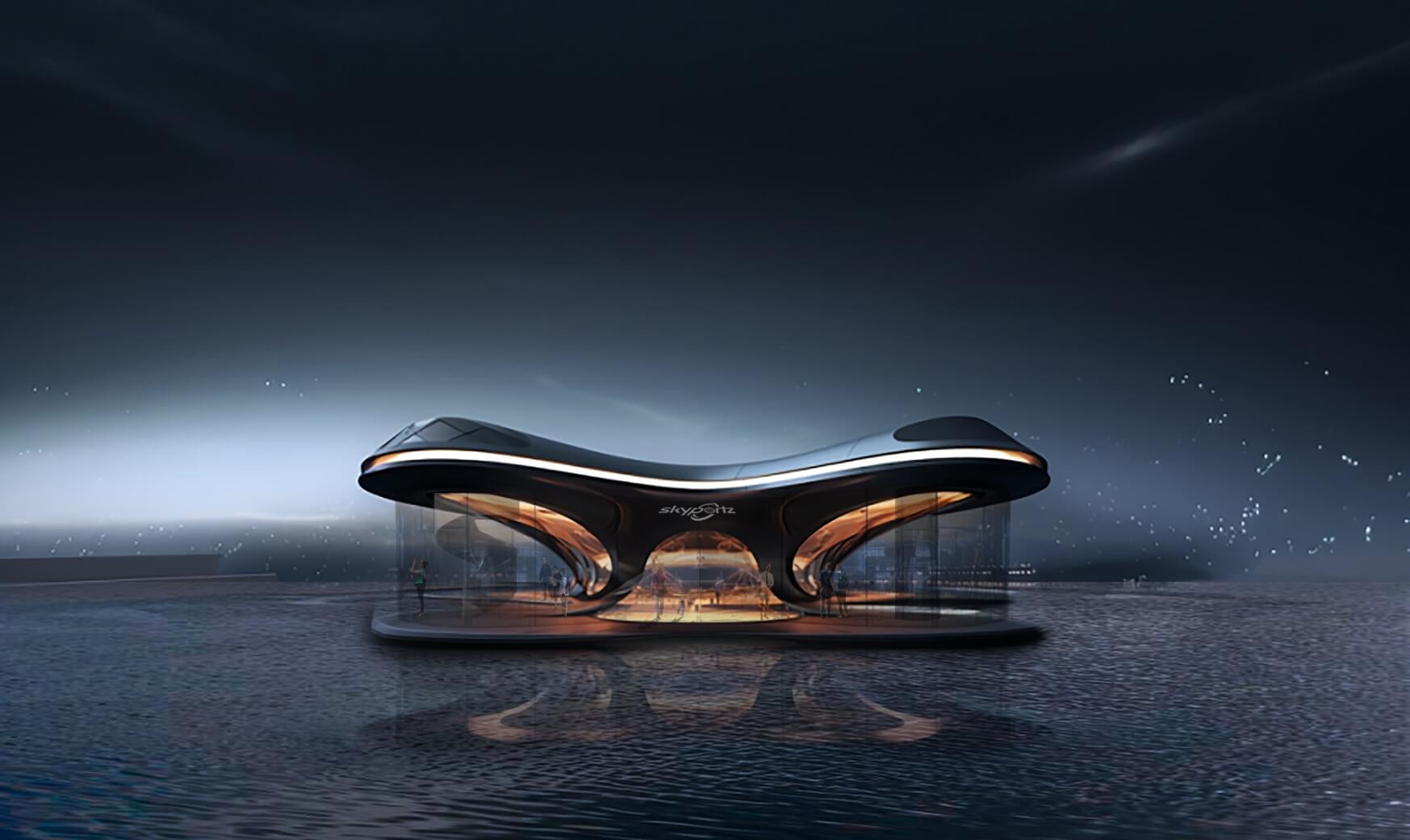Skyportz has released its latest vertiport design which fills a gap in the market for privately owned vertiports for public usage on compact sites.

“We have in our stable of designs, a large public vertiport, a smaller public waterfront vertiport and a tiny “Vertiport in Box” for private usage. With this Skyportz Vertistop design we are filling a gap in the market for a public vertistop that is compact and affordable for property developers wanting to bolt on a vertiport to their existing sites,” said Clem Newton-Brown, CEO of Skyportz. “It could be placed on a rooftop, in a carpark or anywhere there is a space with a minimum of 30×30 meters. By keeping the footprint tight and the passenger handling facilities underneath the pad we can provide a similar customer experience to our larger vertiports.”
The concept behind this design is to keep the construction costs to minimum by utilizing modular design and a small footprint. The design lends itself to retrofitting existing buildings.
“Land is expensive in urban locations, and we believe that simple set down and pick up vertistops in prime locations will have a huge role to play in an Advanced Air Mobility ecosystem,” said Newton-Brown.
The Skyportz Vertistop is designed for a quick turnaround and high throughput. Skyportz anticipates only providing charging facilities as a back up at some, but not all locations.
“Aircraft only provide a return when they are in the air and there is certainly a place for this style of vertiport that encourage quick turnarounds with charging done at larger facilities. Compact vertistops will enable us to achieve more passenger destinations closer to where people want to go,” said Newton-Brown.
The beauty of this design is that should a property owner have a larger site then additional landing pads can be provided adjacent at ground level, without spending any more on a larger building. This would then open the way for waiting bays for aircraft to charge.
The Skyportz Vertistop has been designed by Contreras Earl Architecture with input from Arup to ensure that it is not just a beautiful and functional building, but it also fulfils the expectations for sustainability.
“This landmark building is the result of addressing many different important parameters, including sustainability, context, climate, community and the user experience,” said Rafael Contreras, director, Contreras Earl Architecture. “The vertiport will feature a high-performance roof designed to be structurally robust, lightweight and sustainable owing to its aluminium monocoque structure — the same system employed in the manufacturing of cars and aircraft. By embracing the latest technology, we are liberated from traditional building practices and forms, and free to explore more forward-thinking ideas. We are excited to be working together with Arup and Skyportz in the development of this innovative infrastructure and what it means for the future of a clean and green mode of transportation.”
“In the evolving landscape of transportation, technology is introducing innovative ways to travel in the future, providing adaptable solutions for integration into existing transport systems,” said Arup sustainable buildings leader Richard Vincent. “The infrastructure and buildings facilitating these innovative transportation modes must be designed with circular economy principles, climate resilience and zero emissions in order to achieve the best possible results for our planet and local communities alike. At Arup we are keen to be involved in helping to make the future modes of transport a sustainable reality.”
Decarbonizing aviation is one of the biggest aims of this industry in developing electric powered flight. However, the community is increasingly expecting that vertiport operators have a similar commitment to sustainability in their ground-based infrastructure.
Skyportz and Contreras Earl Architecture are seeking global construction partners to manufacture and instal their vertiport designs under license.

